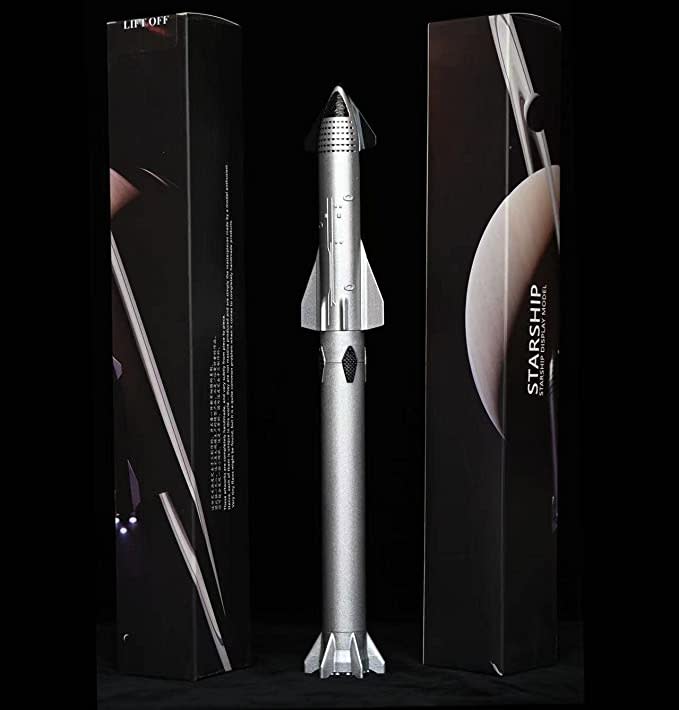When you purchase through links in our articles, Future and its syndication partners may receive a commission.

Photo credit: SpaceX
The seventh test flight of SpaceX’s Starship had some serious ups and downs.
The company launched its Starship mega-rocket for the seventh time today (Jan. 16), sending the 403.5-foot (123-meter) reusable vehicle from its Starbase location in South Texas at 5:37 p.m. EST (2237 GMT; 4:37 a.m. GMT). in the air: 37 p.m. local time).
One of the goals of this ambitious test flight was to capture Starship’s massive first stage booster, known as Super Heavy, back to the Starbase’s launch tower using the structure’s “rod” arms. SpaceX did this for the first time on Starship Flight 5 in October – and did it again today.

SpaceX’s seventh Starship mega rocket will launch on a test flight on January 16, 2025. | Photo credit: SpaceX
The 33-engine booster nestled gently in the tower’s arms about seven minutes after liftoff today, demonstrating the time-saving recovery strategy SpaceX plans to use for both Super Heavy and Ship, the 171-foot (52-meter) tall spacecraft. High school.
Related: Starship and Super Heavy explained
But today not everything went according to plan. SpaceX lost contact with the ship about 8.5 minutes into the flight, apparently after the vehicle suffered an anomaly.
All six of the ship’s Raptor engines fired up during the stage’s ascent burn, “but as we got to the end of that ascent burn, we saw the engines fail based on telemetry, and we’ve lost contact with the ship ever since,” says Dan Huot said SpaceX’s communications team member during the company’s launch webcast.
Huot and his webcast colleague Kate Tice later confirmed that the ship was lost. The reasons were not immediately clear, the duo said.
The ship was expected to fly around the world most of the time and then surface gently in the Indian Ocean off the west coast of Australia about 66 minutes after launch, as was the case with the three previous Starship launches.

The Super Heavy booster of SpaceX’s seventh Starship mega rocket arrives in the launch tower shortly after launch for a test flight on January 16, 2025. | Photo credit: SpaceX
Flight 7 should also include something new for Ship: About 17.5 minutes after liftoff, the upper stage would deploy 10 simulation satellites similar in size and weight to SpaceX’s next-gen version of SpaceX’s broadband Starlink spacecraft. However, the ship didn’t make it that far into flight.
The deployment would have been a useful exercise. SpaceX is counting on Starship to complete the buildout of its Starlink mega-constellation, which currently consists of nearly 7,000 satellites in low Earth orbit but could eventually host more than 40,000 spacecraft.
The dummy satellites were intended to follow the ship’s suborbital trajectory and eventually land in the Indian Ocean, SpaceX wrote in a Flight 7 mission description.
As Huot and Tice noted, the ship’s upper stage flying today was a reissue that featured a number of upgrades and modifications.
“The vehicle’s front doors have been reduced in size and moved toward the nose of the vehicle and away from the heat shield, significantly reducing their exposure to reentry heating while simplifying the underlying mechanisms and protective tiles,” SpaceX wrote in the mission description.
“Propulsion system redesigns, including a 25 percent increase in fuel volume, vacuum jacketing of feed lines, a new fuel feed system for the vehicle’s Raptor vacuum engines, and an improved propulsion avionics module that controls vehicle valves and reads sensors, all contribute to additional improvements. “Vehicle performance and the ability to fly longer missions,” the company added.
According to SpaceX, these modifications added about 6.5 feet to the vehicle’s length.
The Super Heavy that flew today was largely the same as recent boosters, but had a novel feature. The first Super Heavy to be used was used hardware – a Raptor engine that also flew on Flight 5.
RELATED STORIES:
— Will 2025 be the year of Starship? SpaceX’s mega rocket is coming of age.
– SpaceX is expected to receive FAA approval for 25 Starship launches in 2025
– SpaceX’s Starship launcher was just “one second” away from aborting the epic launch tower catch

Die-cast spaceship rocket model Now $47.99 at Amazon.
If you can’t see SpaceX’s Starship in person, you can purchase your own model. Measuring 13.77 inches (35 cm), this is a 1:375 ratio to SpaceX’s Starship desktop model. The materials here are alloy steel and it weighs only 225g.View Offer
Starship’s last six test flights took place in April and November 2023 and in March, June, October and November last year. SpaceX wanted to conduct a stick capture of Super Heavy Flight 6 also, but a communications problem with the launch tower scuppered this attempt and the booster was diverted for a splashdown in the Gulf of Mexico.
SpaceX is developing Starship, the largest and most powerful rocket ever built, to help humanity colonize the Moon and Mars, among other things. And we should expect to see more than just a handful of Starship test flights this year; The company aims to make serious progress on the vehicle in 2025.
“This new year will be transformative for Starship, with the goal of enabling full system reuse online and flying ever more ambitious missions as we gradually work toward sending people and cargo to Earth orbit, the Moon and Mars can,” SpaceX wrote in Flight 7’s mission description.


